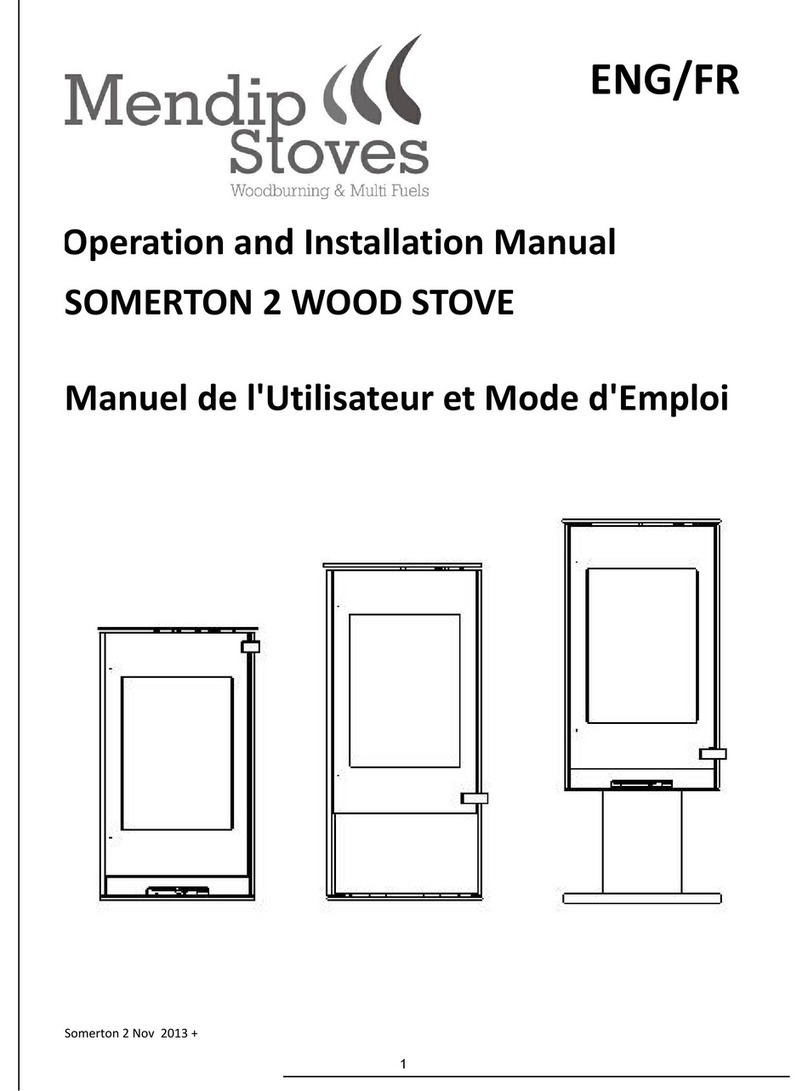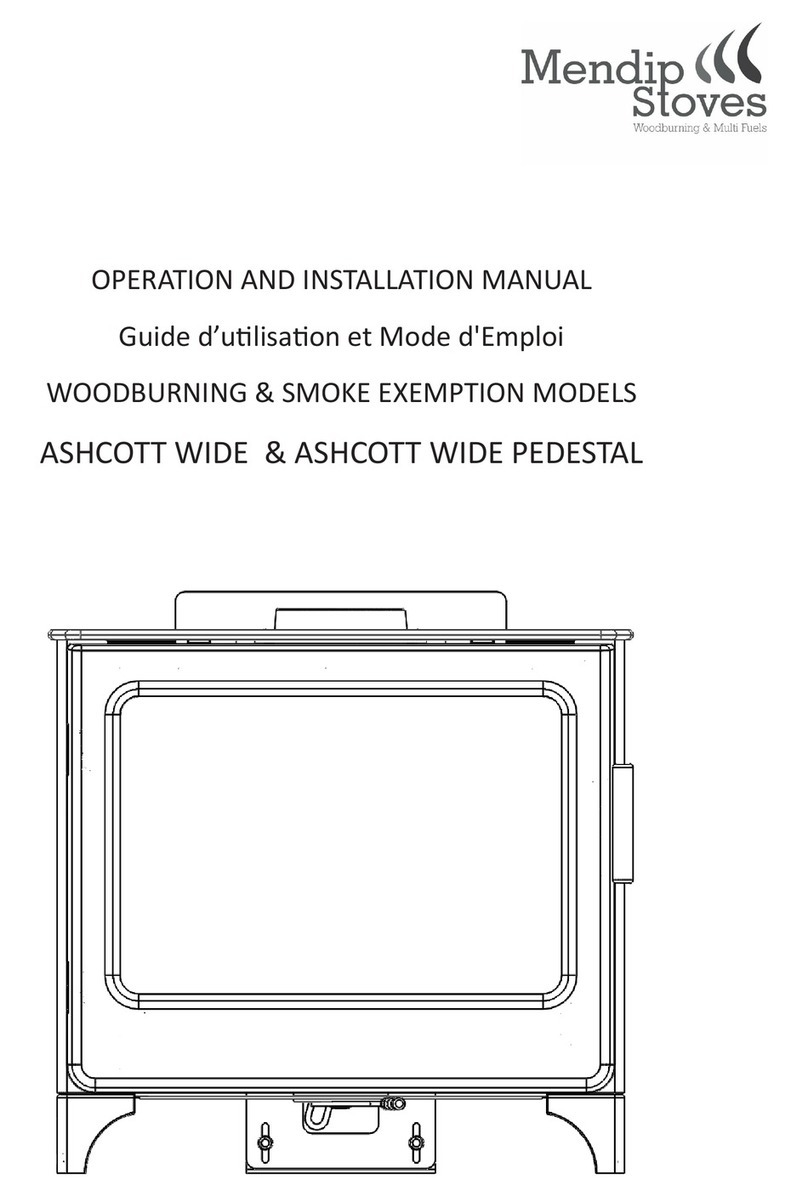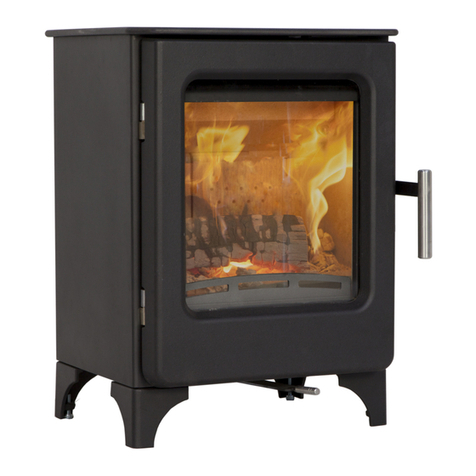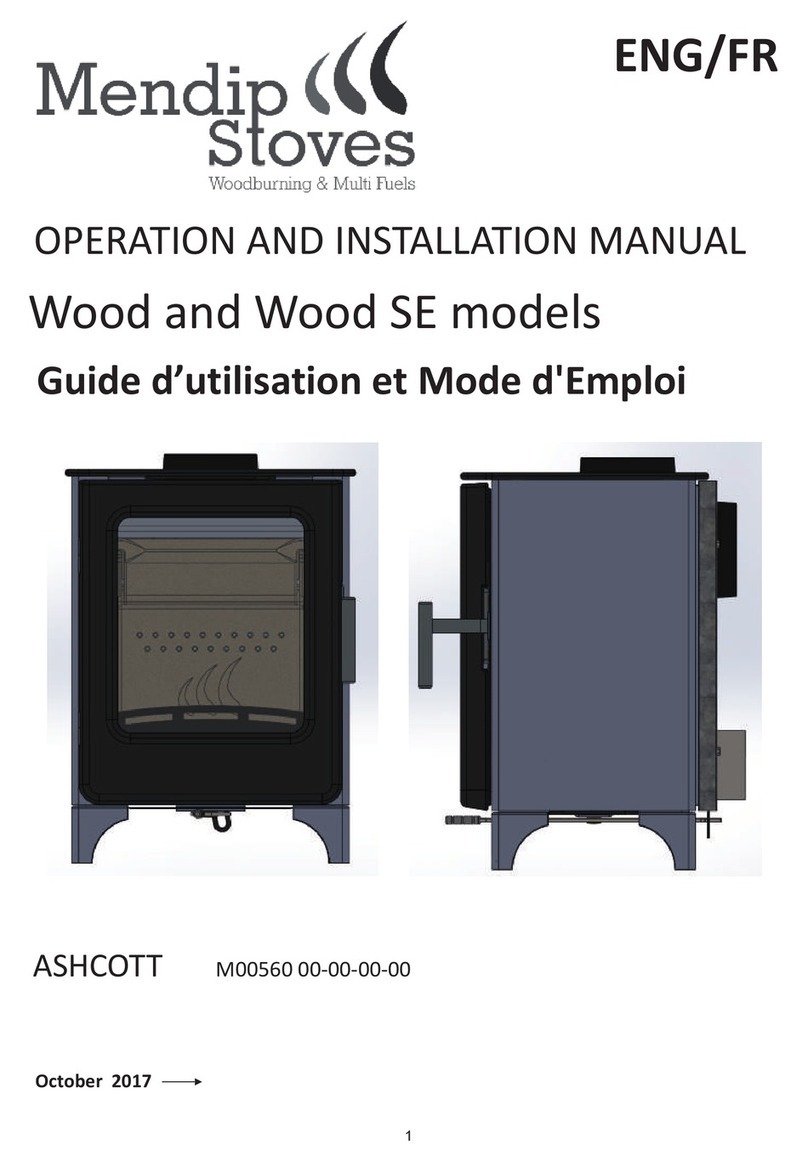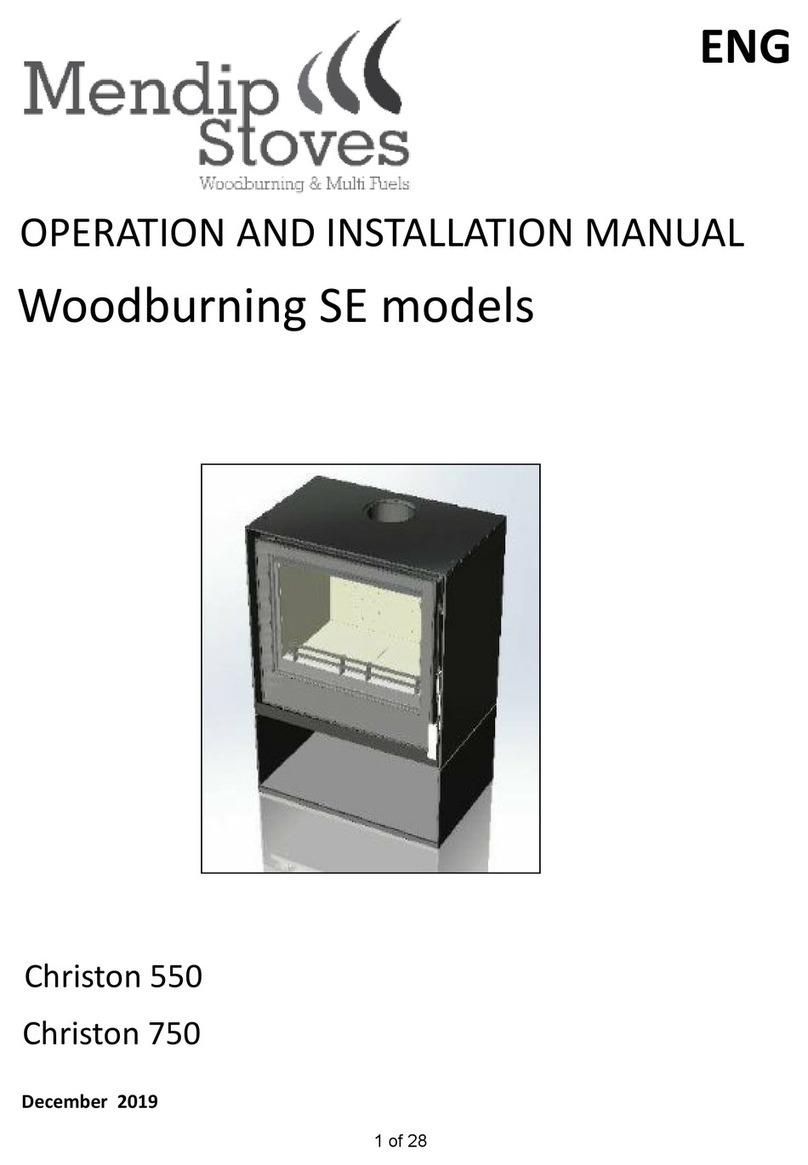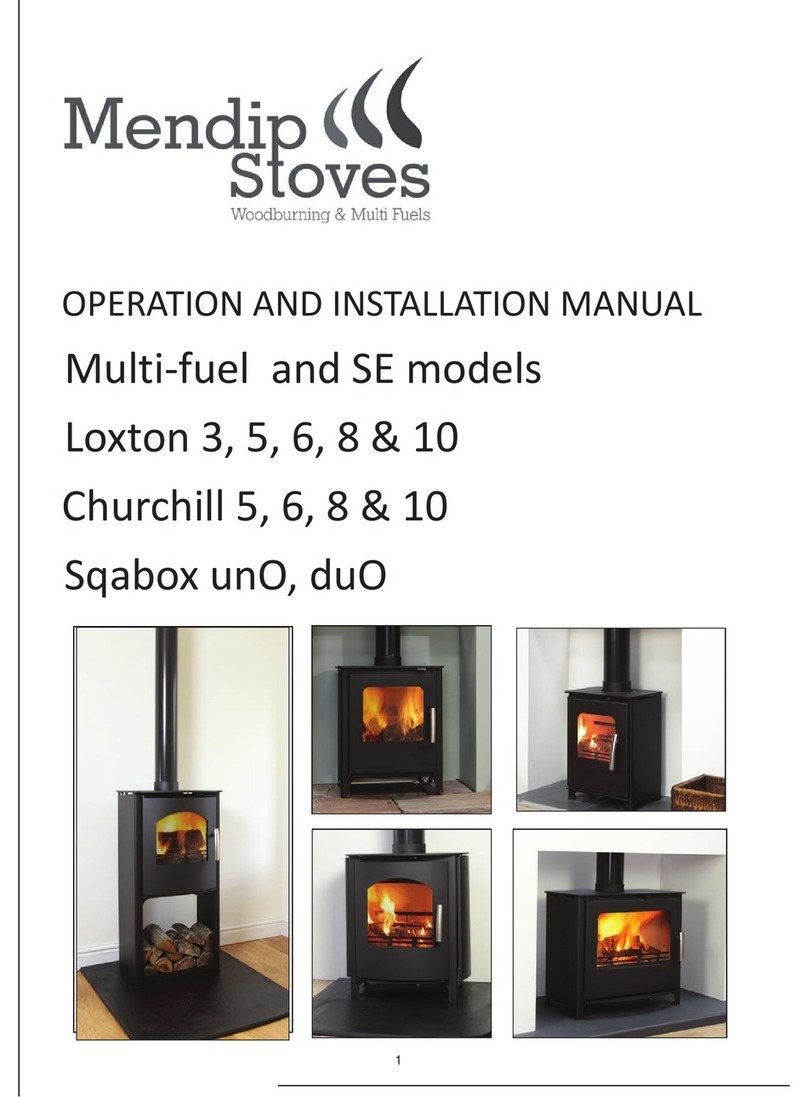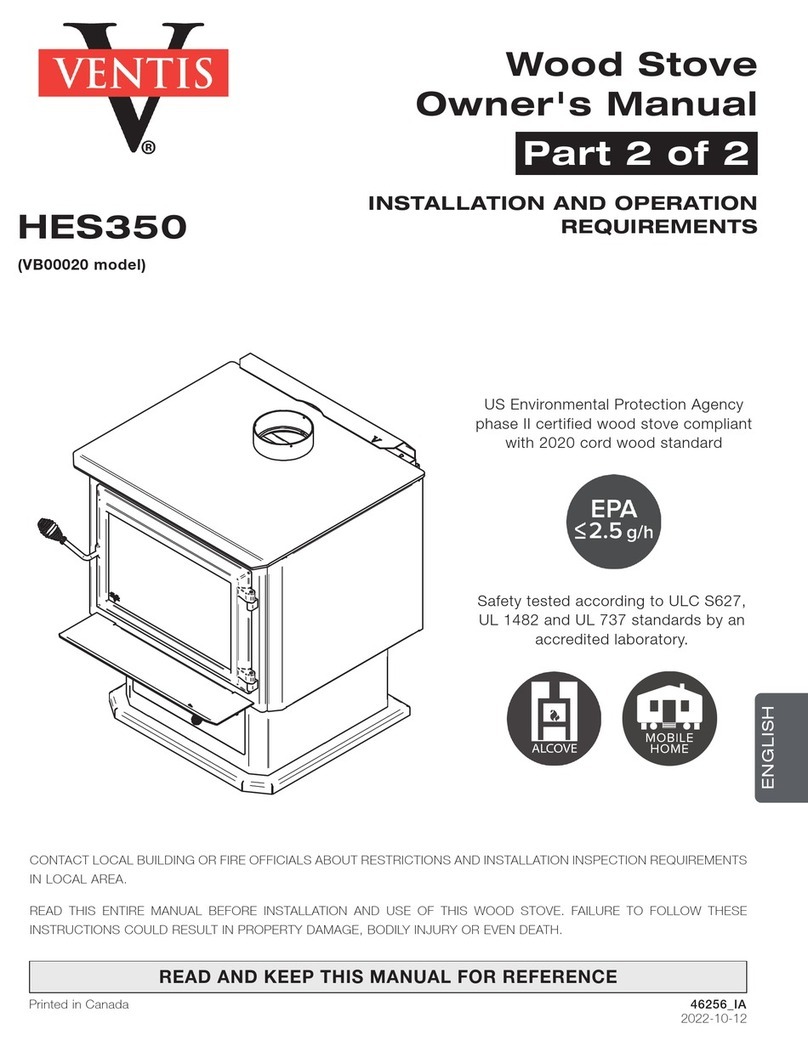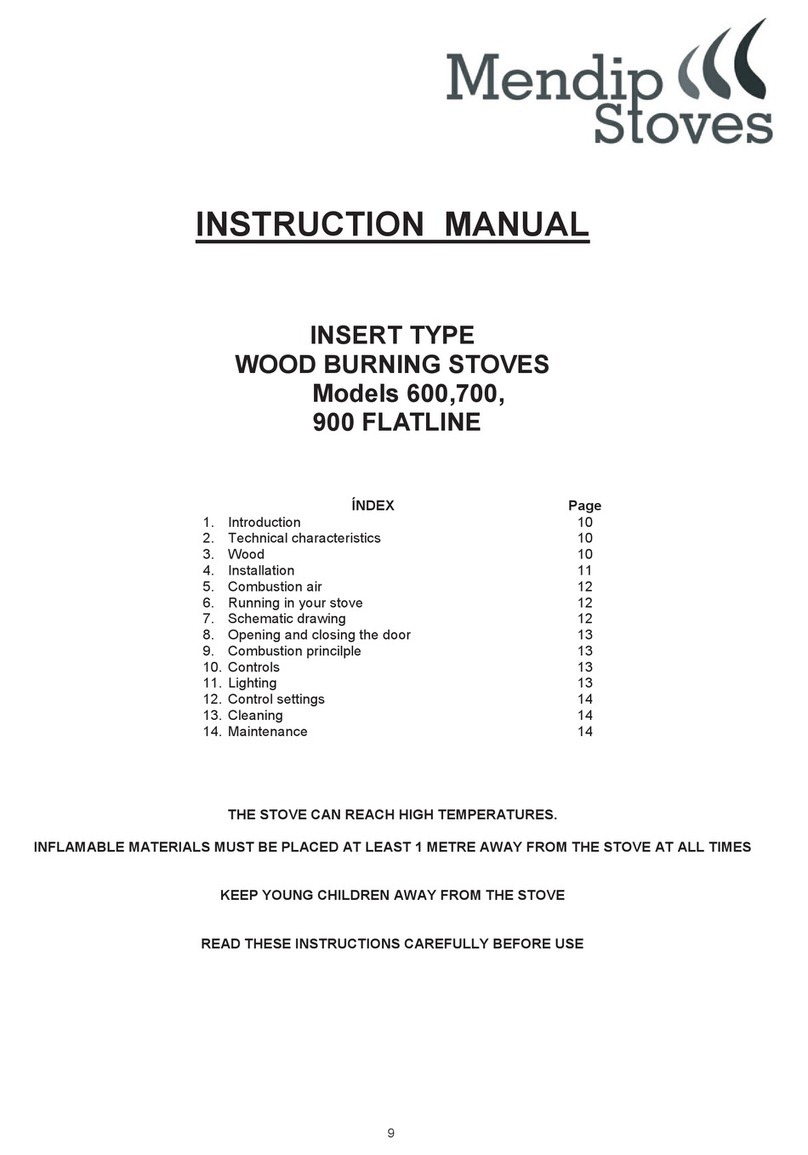12
Lining Your Chimney
European standards must be followed. Due to the technical nature of these standards they are mostly intended for
professional installers. The following lists the relevant European standards.
EN 12446: 2003 - Chimneys - Components - Concrete outer wall elements
EN 1443: 2003 - Chimneys - General Requirements
EN1856-1: 2003 - Chimneys - Requirements for metal chimneys - Part 1: Products for system chimneys
EN1856-2: 2004 - Chimneys - Requirements for metal chimneys - Part 2: Metal liners and connecting flue pipes
EN13384-1: 2003 - Chimneys - Thermal and fluid dynamic calculation methods - Part 1:
En 2006 - Chimneys serving one appliance
EN1857: 2003 - Chimneys - Components - Flue liners
EN1457: 1999 and Clay/ceramic flue liners - Requirements and test methods
En 2002
EN 1806: 2006- Chimneys - Clay/ceramic flue blocks for single wall chimneys - Requirements and test methods
EN13069: 2005 - Chimneys - Clay/ceramic outer walls for system chimneys - Requirements and test methods
EN 13063: 2006 - System chimneys with clay/ceramic flue liners - Part 1: Requirements and test methods for soot
resistance
The liner must be safely and securely connected to the outlet pipe of the stove. And your chimney or liner must be swept
at least once each heating season and in accordance with local regulations.
Your fireplace
If cement mortar has been used on the inside or outside of the fireplace during construction or installation then a period of
at least 7 days should be allowed before operation to prevent the cement cracking when drying out. The stove will smoke
slightly when first lit. These are fumes from the high temperature paint curing and baking hard. The house should be well
ventilated during the curing period, which will last approximately twenty minutes. During this period the paintwork of the
stove should not be touched. Only an appliance fitted by an accredited installer guarantees compliance with architectural
and fire prevention regulations. These rules must be followed to ensure the correct and safe operation of the stove. The
flue is extremely important when fitting the stove. Be sure to consult authorised specialists about the connection to ensure
compliance with local building regulations. Bear in mind the following:
� The appliance door must be closed when in use and also when not in use.
� There must be an adequate supply of fresh air when the appliance is in use.
Fire safety measures relating to combustible or temperature sensitive floor surfaces:
� A fire resistant, non combustible covering must be fitted under and around the stove. This must be at least 15cm thick.
� No combustible materials should be stored underneath the appliance (e.g. firewood).
� The safety distances from combustible or temperature sensitive objects, given in the table of technical characteristics,
must be adhered to.
5. COMBUSTION AIR
Contrary to a normal fireplace the stove uses very little combustion air. In most houses entry of fresh air through gaps in
doors and windows is sufficient to provide this air. However, in houses that are well insulated this may not be sufficient. If
so, a ventilation grille should be set into an outside wall near the stove to provide additional combustion air. The combus-
tion air consumption of your particular stove can be found in the technical characteristics. Take account of other heating
appliances or air outlet installations in the same area or on the same combustion air connection. If needs be the total
combustion air consumption for the room(s) should be calculated. If 15 minutes after lighting the fire there is still a
backdraught of flue gases due to weather conditions (e.g. fog, storm) stop lighting the fire until the weather improves. Tip:
be sure to take account of extractors which might be connected in the vicinity of the stove. These create negative pres-
sure, which can lead to disruptions in the supply of combustion air. Any escape of combustion gas is potentially lethal and
can damage the health of the people living in your home.
6. RUNNING IN YOUR STOVE
Run your stove in slowly. Your first fires should be made with a small amount of wood and a gentle flame, allowing the
stresses in the metal to dissipate and the entire installation to dry out. Even after running in your stove, never make
intense, prolonged fires. Little extra heat output is achieved and you risk damaging your stove.
7. SCHEMATIC DRAWING
A. Cold air inlet.
B. Hot air outlet.
C. Combustion air control.
D. Door catch.














